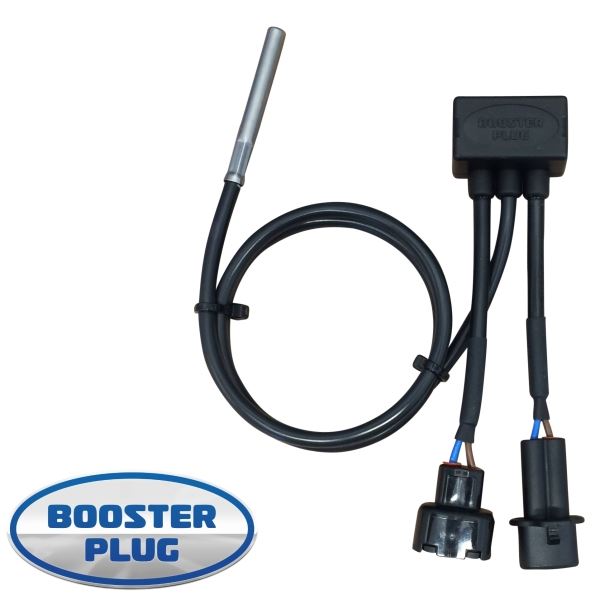yojimg
Member
- Joined
- Oct 26, 2021
- Messages
- 83
- Reaction score
- 68
- Points
- 18
- Location
- San Francisco, CA, USA
Follow along with the video below to see how to install our site as a web app on your home screen.

Note: This feature currently requires accessing the site using the built-in Safari browser.

Looks like a temp probe to me, and not an antenna. (But I could be wrong)
I know there was an accessory called a "booster plug" or something that used a temp probe and a circuit of some sort to spoof the fuel delivery to richen the mixture. Kind of like a poor-man's Power Commander. Might be something like that.

Oh yes, Boosterplug has been mentioned on this forum:I haven't heard of anyone on this forum ever mentioning a Boosterplug.
I assume it's just a pre-programmed fuel enrichening hack.
I believe they're already illegal in California.
It basically fools the inlet temp sensor to read a few degrees colder. Even cheaper and simpler versions simply offset the measurement (steady resistance), the Booster Plug accounts for ambient temperature and varies the offset accordingly (temperature dependent resistance).I haven't heard of anyone on this forum ever mentioning a Boosterplug.
I assume it's just a pre-programmed fuel enrichening hack.
I believe they're already illegal in California.
I tried a similar device on my Goldwing F6B to deal with the common cold stumble issue found on many GL1800 engines.It basically fools the inlet temp sensor to read a few degrees colder. Even cheaper and simpler versions simply offset the measurement (steady resistance), the Booster Plug accounts for ambient temperature and varies the offset accordingly (temperature dependent resistance).
Colder air is denser, so more fuel is added to compensate for the increased mass of air. Tricking the IAT to read colder richens the mixture. Some claim small to moderate gains, especially considering the engine is mapped for efficiency and therefore a leaner mix. Crude, but (reportedly) mildly effective.

I'm skeptical of anything that fools a sensor, especially where the fuel map has more that just IAT as an input.I tried a similar device on my Goldwing F6B to deal with the common cold stumble issue found on many GL1800 engines.
It was from Electrical Connection and was called a "stumble stop".
It also tied into the harness from the IAT sensor.
It had some adjustment built into it by way of 2 potentiometers.
It did work, but after a half hour of riding it would throw a MIL fault from the IAT sensor.
I just removed and sold the electronic "hack" as I call it.
Looking at the EC website, it is no longer listed, as devices like this either are already are or will be illegal to sell and use.
Here's a pic I found on the web of the device before it was discontinued:
Thanks -- I'm trying to remember to ride in (about) a gear higher than I used to. I do have the NC's dash/tachometer set to "eco" mode so it turns green when I'm riding most efficiently. Also, mine is a manual bike -- I wonder whether the DCT models get higher MPGs than the manuals?The NC750X and the CB500X are not all that different in fuel mileage, according to Fuelly examples. Make sure you ride the NC at lower RPMs than you would on the CB, as making power down low is one of the NC engine design traits.
I don’t know how the ‘21 NC DCT compares, but past model comparisons between DCT and manual had the manual getting slightly better mileage, or there being no difference. In the end, either way it’s a constant mesh transmission and a multiplate friction disk wet clutch, so any power or efficiency losses through the drive train would be the same. Whether you pick the gear ratio or let a computer pick the gear ratio is the only difference.Thanks -- I'm trying to remember to ride in (about) a gear higher than I used to. I do have the NC's dash/tachometer set to "eco" mode so it turns green when I'm riding most efficiently. Also, mine is a manual bike -- I wonder whether the DCT models get higher MPGs than the manuals?